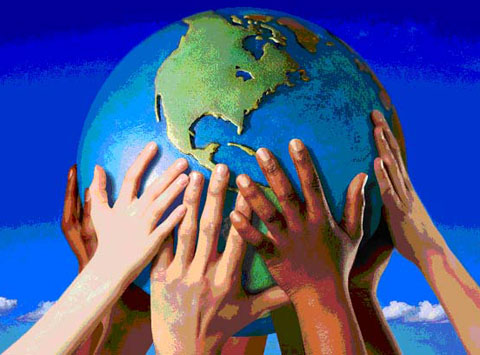by Nathan Eagle on 20 January 2008 in The Garden Island News
A development boom. Illegal boating. Genetically-modified organisms. Hawaii Superferry. Military occupation.
Too many chemicals. Too much expansion. Too little input. Not enough consideration.Residents cited these concerns and more in a state-commissioned report that explains how Hawai‘i should tackle environmental injustices.
The 152-page document, published Jan. 9, defines for the first time what environmental justice means in the context of this unique archipelago.
The Hawai‘i Environmental Justice Initiative Report, authored by Leslie Kahihikolo, also recommends changing policies and tweaking existing laws.
“Environmental justice is the right of every person in Hawai‘i to live in a clean and healthy environment, to be treated fairly and to have meaningful involvement in decisions that affect their environment and health, with an emphasis on the responsibility of every person in Hawai‘i to uphold traditional and customary Native Hawaiian practices that preserve, protect and restore the ‘aina for present and future generations,” the report states.
“Environmental justice in Hawai‘i recognizes that no one segment of the population or geographic area should be disproportionately burdened with environmental and/or health impacts resulting from development, construction, operations and/or use of natural resources,” the definition continues.
More residents on Kaua‘i participated in this project than on any other island.
Sixty-one people attended community meetings on Sept. 20 in Niumalu and Nov. 1 in Kapa‘a. They cited concerns ranging from cruise ship pollution to invasive species.
Statewide, 152 individuals partook in the community involvement process, which started August 28th and ended November 15th.
The Legislature in May 2005 found the need “to develop an environmental justice guidance document to ensure that principles of environmental justice are systematically included in all phases of the environmental review process and that each agency fulfills its duty to identify and address at the earliest possible time any disproportionately adverse human health, environmental or cultural effects on minority populations, Native Hawaiians and low-income populations
that would be caused by a proposed action or the agency’s policies, programs, and activities.”
During the 2006 legislative session, Sen. Colleen Hanabusa, D-21st District, introduced a plan to accomplish this goal. Gov. Linda Lingle signed the bill into law July 10, 2006.
The state Environmental Council hired Kahihikolo as the environmental justice project coordinator last spring, and work began. A big part of the process was gathering public input.
Some 64 pages of the report are filled with comments from residents saying what environmental justice means to them and citing their concerns about poverty, inequality, waste and other issues stemming from government agency decisions.
For example, Kahihikolo shares the story of Kaho‘olawe.
The U.S. military took the island of Kaho‘olawe from the Native Hawaiian people and used it for bombing practice from the 1930s to the 1990s, she states in the report. This greatly impacted the Native Hawaiians’ ability to practice their culture on their lands.
“Because environmental justice seeks to avoid disproportionate negative environmental impacts to minority and low-income people, the Kaho‘olawe project is a prime example of an environmental injustice to the Native Hawaiian people,” Kahihikolo says.
The report recommends developing a culturally based curriculum as a step toward overcoming such an injustice.
“Environmental justice should work as a tool to level the playing field,” a Hawai‘i resident says in the report.
“If the impacts are good for one, then they should be good for all,” another person states.
“The majority of Native Hawaiians have been pushed down all their lives. They feel as though they cannot say anything,” a third individual says.
The report recommends that the state Office of Environmental Quality Control (OEQC) adopts the EJ Guidance Document for use in the EIS process, Kahihikolo said in an e-mail Thursday.
“At this time I am unsure if, when or how the EJ guidance document will be adopted by OEQC, but I encourage grassroots efforts to ensure this guidance document is utilized,” she added.
OEQC officials and state legislators could not be reached for comment at press time.
Other recommendations in the guidance document include details on conducting environmental justice screening analyses to identify under-represented populations in proposed action areas and to determine whether disproportionate effects will impact these populations.
The report says these issues are addressed by asking two questions:
Does the potentially affected community include under-represented populations? And, are the environmental impacts of a proposed action likely to fall disproportionately on under-represented members of the community?
|

